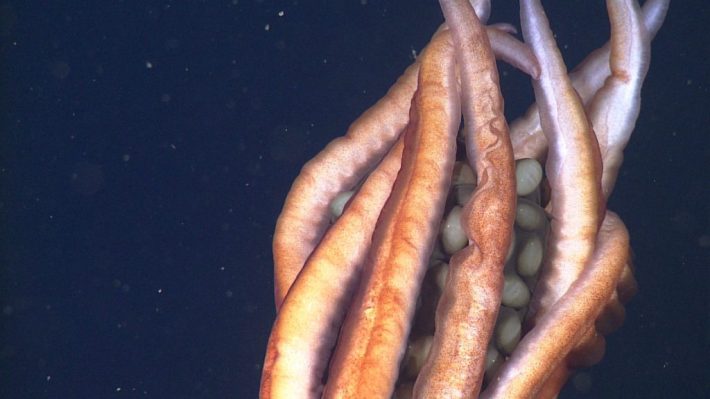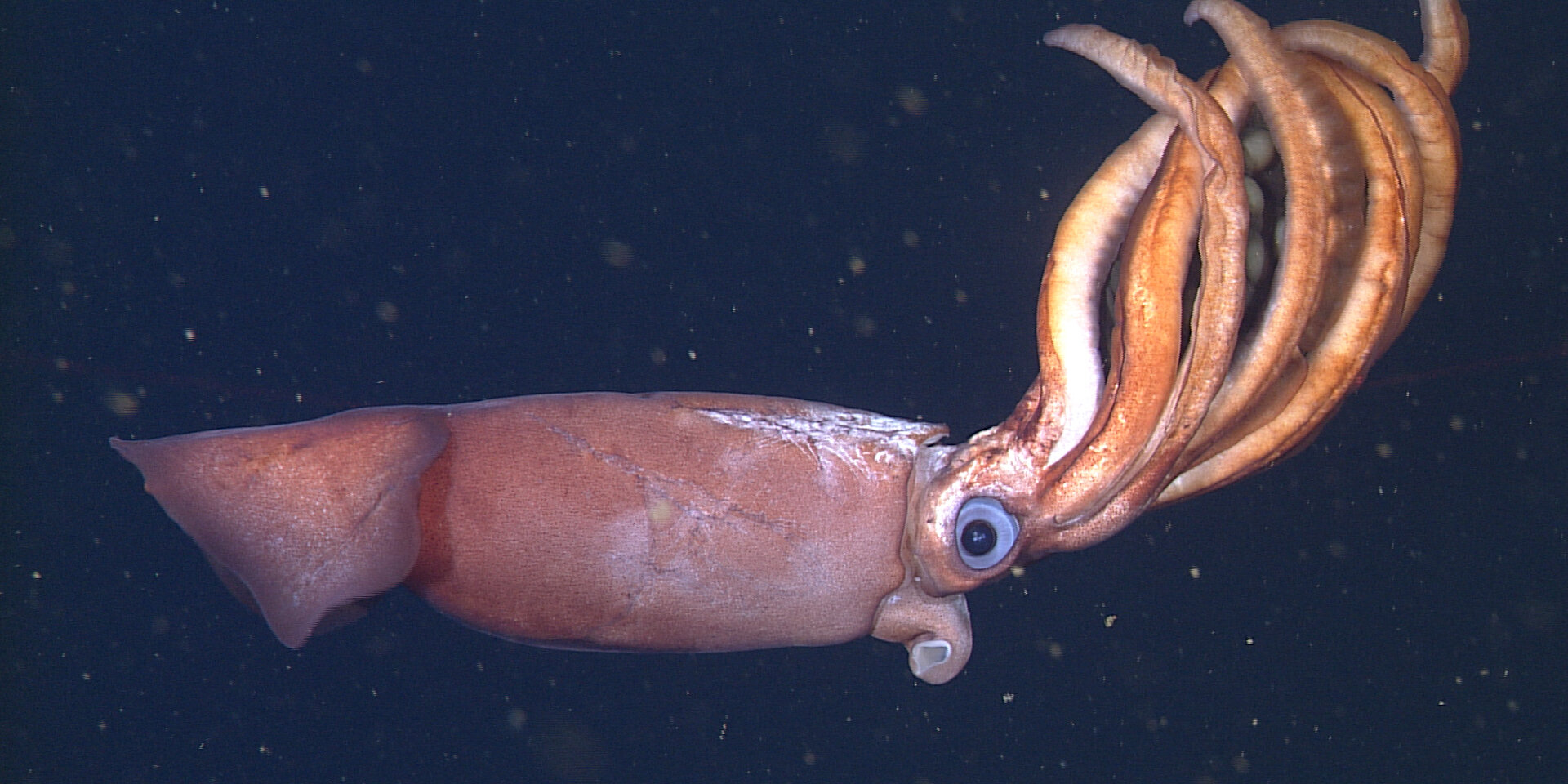Some would say that there is no sweeter image than that of a young mother embracing her infant toddler. Today, I’d like to share with you an even sweeter photo: a young mother cradling 30 to 40 of her babies, who are still eggs, in her clammy, clam-covered arms. To make it even more beautiful, it’s a video, not even vertical, in front!
The mother squid below was filmed in 2015 by researchers from the Monterey Bay Aquarium Research Institute piloting the remotely operated vehicle Doc Ricketts, which was named for a famous scientist who had 15 species of animals and a nightclub named after him. Researchers launched the ROV into the Gulf of California to find out how many creatures inhabit deep ocean regions with extremely low oxygen levels. A little more than 8,400 meters below the surface, a huge red squid hovered, carrying several dozen eggs in its fleshy arms.
Most squid have a much more carefree approach to childcare, meaning they lay their eggs and die immediately. As such, it is often difficult for scientists to track where these eggs go, beyond the mouths of hungry predators. Some squid anchor their eggs to the bottom of the sea. Some jumbo squid lay diaphanous masses that hold up to 90,000 eggs that hover, neutrally, in open water. But deep-sea squid have a strategy all their own. Some lay their eggs, holding their eggs in large sheets resembling Hong Kong egg waffles as they move about in the dark.
MBARI scientists have observed several other species of deep-sea squid feeding their eggs during 37 years of exploration. They have observed some black-eyed squid Gonatus onyx holding a billowing balloon of small eggs, which the squid holds using hooks on its arm. And they filmed the squids in the sex Bathyteuthis trapping hundreds of tiny translucent eggs in a curtain-like sheet. These hatchling squids cannot eat while nursing, so they hold on to energy reserves until their eggs hatch and are free to die.
The newly filmed squid appears to be a new species in the family Gonatidae, or wing squid. They are named for the numerous hooks on their wings, which are actually modified suckers, and the larger hooks on their two long tentacles. The researchers were amazed by how large the eggs of the young squid were – each nearly half an inch in diameter, twice the size of previous observations of the bay. Gonatus squids and the largest recorded of any squid. And while others Gonatus squids lay clutches of up to 3,000 eggs, this mother only had 30 to 40.
Laying thousands of eggs can be a good bet for shallow-water squid that live in unpredictable environments with varying amounts of food and predators. But the researchers suggest that a strategy to invest more time and care for fewer eggs may pay off in the relatively stable environment of the deep sea. “Her sacrifice improves the chances that her offspring will survive. It’s just one of many remarkable adaptations that can help cephalopods survive in the deep sea,” Henk-Jan Hoving, a researcher who heads the marine biology working group deep in GEOMAR. in Kiel, Germany, and conducted this research while at MBARI, Deep Octopus said in a statement Graneledone boreopacifica relies on this strategy to an extreme degree, spawning its eggs for more than four years.

But larger eggs take longer to develop, and researchers predict that the eggs of this squid take at least 1.4 years to develop into squid. This time frame is remarkable, not only for the effort it requires of the mother squid, but also for the fact that it exceeds the lifespan of most cephalopods that live in shallow or coastal waters. The researchers suggest that squid can only perform such a sensitive act of needling in these low-oxygen regions of the ocean, where predators may be rarer. Either way, it’s a long time to dive deep while doing your best to avoid eating.
While this mother squid was filmed in 2015, her eggs would have hatched long ago, leaving her to die and sink to the bottom of the Gulf of California. Somewhere in the bay, a deep pool called the Cerralvo Trough has become an unofficial squid graveyard, where the corpses of mother squid and the remains of their eggshells are placed in the dark to feed these even deeper creatures. In 2012, MBARI researchers recorded a decline in dead squid and egg sheets that had become a feast for mousefish, oakworms, brittle stars, sea cucumbers, crustaceans and starfish. It appears that the mothers all died at the same time, dropping their babies into the depths as they dived together until the ratfish had removed their tentacles for a snack. And isn’t this a beautiful image too!
